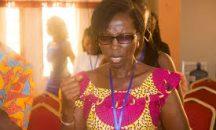Shift work and brain damage: Insomnia
Insomnia, which is defined as having both poor sleep quality and impaired sleep related activities of daily living (ADL), was reported by 18.5 percent of night-shift workers compared with 8.4 percent of daytime workers.
Workers 60 years old or older had a lower prevalence of short sleep duration, impaired sleep-related activities of daily living (ADL), and insomnia than those 30 to 59 years old.
Female workers had a lower prevalence of short sleep duration but a higher prevalence of the other three sleep outcomes (poor sleep quality, impaired sleep related ADL, and insomnia) than male workers.
Obese workers had a higher prevalence of short sleep duration and poor sleep quality than those who were normal weight/underweight.
Current smokers had a higher prevalence of short sleep duration, poor sleep quality and insomnia (but not impaired sleep-related ADL) than non-smokers.
Workers who worked 48 hours or more per week had a higher prevalence of short sleep duration, poor sleep quality and insomnia than those who worked less than 48 hours per week.
Workers who frequently used sleeping pills had a higher prevalence of poor sleep quality, impaired sleep-related ADL and insomnia (but not short sleep duration) than those who did not.
A higher prevalence of all four sleep outcomes (short sleep duration, poor sleep quality, insomnia, and impaired sleep-related ADL) was observed among workers who were widowed, divorced or separated; workers who reported fair or poor health; workers with symptomatic depression; and workers who had a physician diagnosed sleep disorder – than among workers who did not have those characteristics.
Although our study was not subject to limitations of earlier investigations with smaller sample sizes, it was subject to other limitations inherent in the kind of investigation we conducted. We describe those limitations in our paper.
As we note there, they are mitigated to some degree by the consistency of our methods and findings with those of other well-designed studies in the literature.
Particularly in light of the likely continuing increase in non-traditional working schedules, work-based prevention strategies and policies should be adopted to improve the quantity and quality of sleep among workers. Unfortunately, there is no single ideal strategy to successfully address the sleep risks of every demanding shift-work situation.
Instead, interventions often need to be customised to the specific employer and worker. These include designing new shift schedules with frequent rest breaks, avoiding night shifts that exceed eight hours, improving one’s sleep environment, taking a long nap before a night shift begins, accelerating the modulation of circadian rhythms using bright lights, improving physical fitness, engaging in stress reduction activities, and strengthening family and social support.
Sources of further information and recommendations from NIOSH can be found on the Work Schedules: Shift Work and Long Hours topic page. What challenges have you found with night shifts, and what approaches have you used?
Geoffrey Calvert, MD, MPH, FACPDr. Calvert is a Team Leader and Senior Medical Epidemiologist in the NIOSH Division of Surveillance, Hazard Evaluations, and Field Studies
Emotional Surgery as a remedy
This NeuroSoft Technology seduces your emotions by inducing brains cells to rectify the negative conditions that might be hiding, waiting to cause sudden death.
This is a Multi-Trillion Dollar NeuroSoft Technology invented by a Computer Programmer and a Software Engineer with very deep knowledge in Neuroscience,Virtual Surgeries, Visual Arts and Psychology.
Robert Grimmond-Thompson –is a Super Creative Genius with super Type “A” Brain.
Emotional Surgery is the Art and Science of using colour coding frequencies for Surgery. It is a self-induced type of surgery to reassure the mind- removing things that are not good from the human mind -Post Traumatic Stress Disorders (PTSD), Traumatic Brain Injuries (TBI), etc. This therapeutic programming software promotes brain cell coordination, seducing the brain by inducing the neurons.
The system of Emotional Surgery works because the inventor, Robert Grimmond Thompson, impregnates his coded Software PeTStar ver.8.31 with 980 Trillion special light rays consisting colour codes that have different wavelengths and vibration frequencies and codes which affect your mind, cells, electrical impulse and body chemicals differently.
The system communicates with special cells in your body for good health. He empowers the human brain with very high levels of creative intelligence coding frequencies- engaging the highest form of stealth colour codes with radiant energy acting on the retina.
This ambitious and intriguing imagery of optical information received through this technology communicates to the brain to direct the various bodily functions to respond accordingly using optimum energy fields.
Robert Grimmond-Thompson – An EMOTIONAL SURGEON, NEUROKINETICS NETWORK ENGINEERING SURGEON, an American trained, Software Engineer, Computer Programmer, PC-Specialist, a Painter, Medical Graphic Arts Specialist, an Inventor and Innovative Technologist, etc.
He is an accomplished Artist and the number one (#1) Health Discoveries and Research Personality Award Winner in the year 2017 (The BRITISH COUNCIL –ACCRA, GHANA).
PTSD STATISTICS
Seventy per cent (70%) of adults in the U.S. have experienced some type of traumatic event at least once in their lives. This equates to approximately 223.4 million people. Up to 20 percent of these people go on to develop PTSD. As of today, that equates to approximately 44.7 million people who were or are struggling with PTSD.
…to be continued.
Robert Grimmond Thompson











